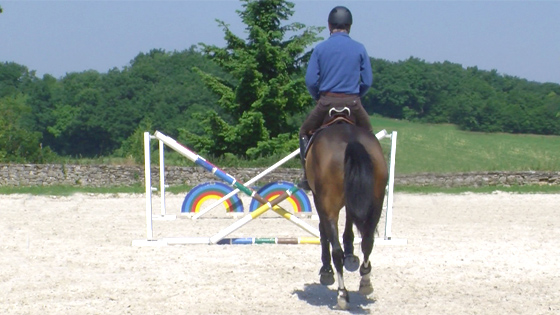Jumping a course of cavalettis with a definite number of strides

A fun exercise that will challenge your ability to control the track as well as the speed during a course. It is about getting the correct number of strides on a track with successive loops. The exercise is not as easy as it seems as the rider has to be aware of the horse’s speed while directing his shoulders as if he would be on a train track.
A fun exercise that will challenge your ability to control the track as well as the speed during a course. It is about getting the correct number of strides on a track with successive loops. The exercise is not as easy as it seems as the rider has to be aware of the horse’s speed while directing his shoulders as if he would be on a train track. The set-up of the exercise doesn’t challenge the integrity of the horse’s body, therefore the rider can repeat the exercise multiple times, looking to perfect it as she goes. At the end, it would be ideal to practise the exercise successfully with light aids, meaning with very little hand and leg actions.
This is a really educational exercise for both the horse and the rider who has to anticipate and plan for each part of the course. So, it provides a real mental and physical preparation to competitions free of risk for the horse and the rider.
Marine practices the exercise with Vivaldi, a 10 year old Stallion owned by the Haras de Hus.The first few trials have revealed that it is crucial to stay in the “position of the middle”, meaning being perfectly centred in the saddle to stay on the track and jump in the centre of the fences. The benefits of the position of the middle is to be ready for everything: to go jump or to stop or to slow down or to speed up….Too often riders are riding only in one position which is the “Position to Jump”. It leads most often to some problems in controlling the horse during the entire course. The first few fences are usually well executed but little by little the horse takes over as he becomes stronger and increases the length of jumps as he goes. This exercise Michel is showing here, is an excellent way to learn how fix this kind of issues staying calm and in good spirit.


